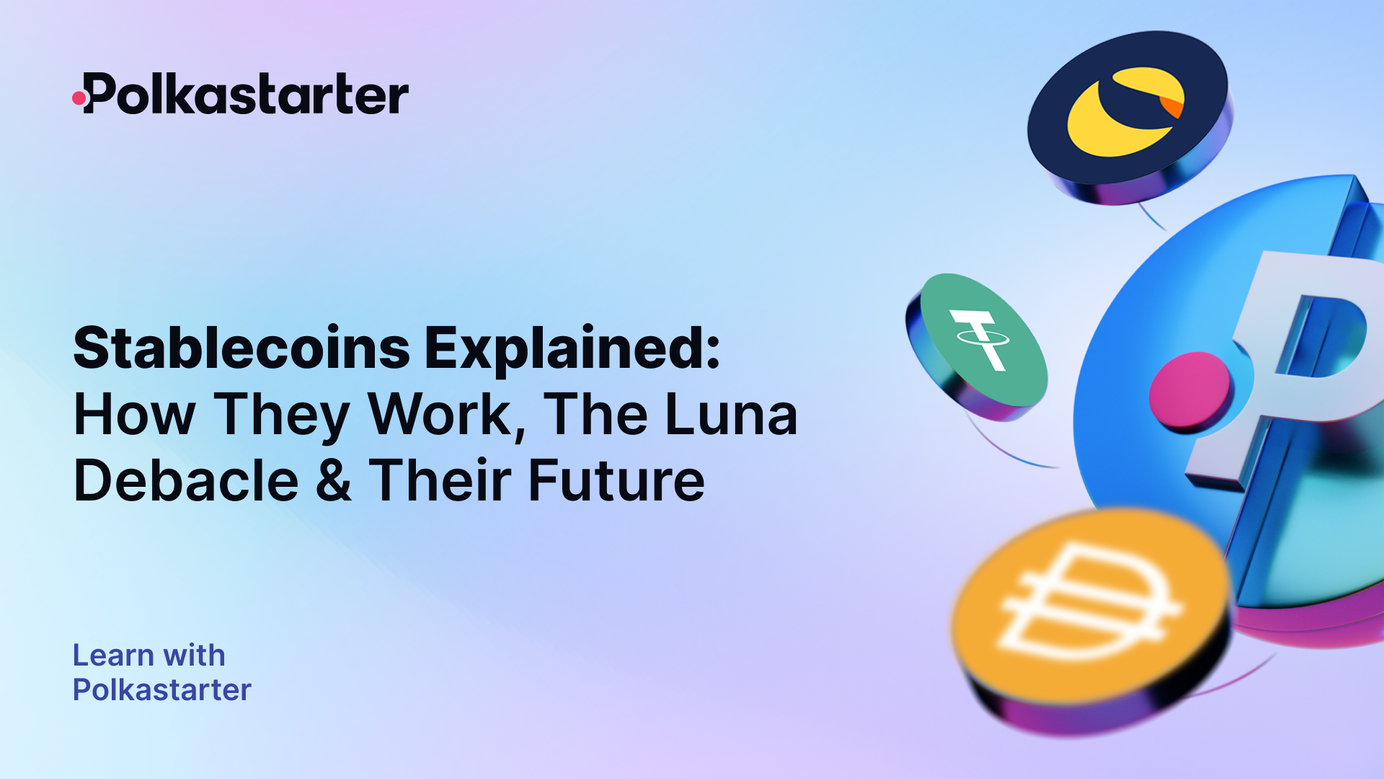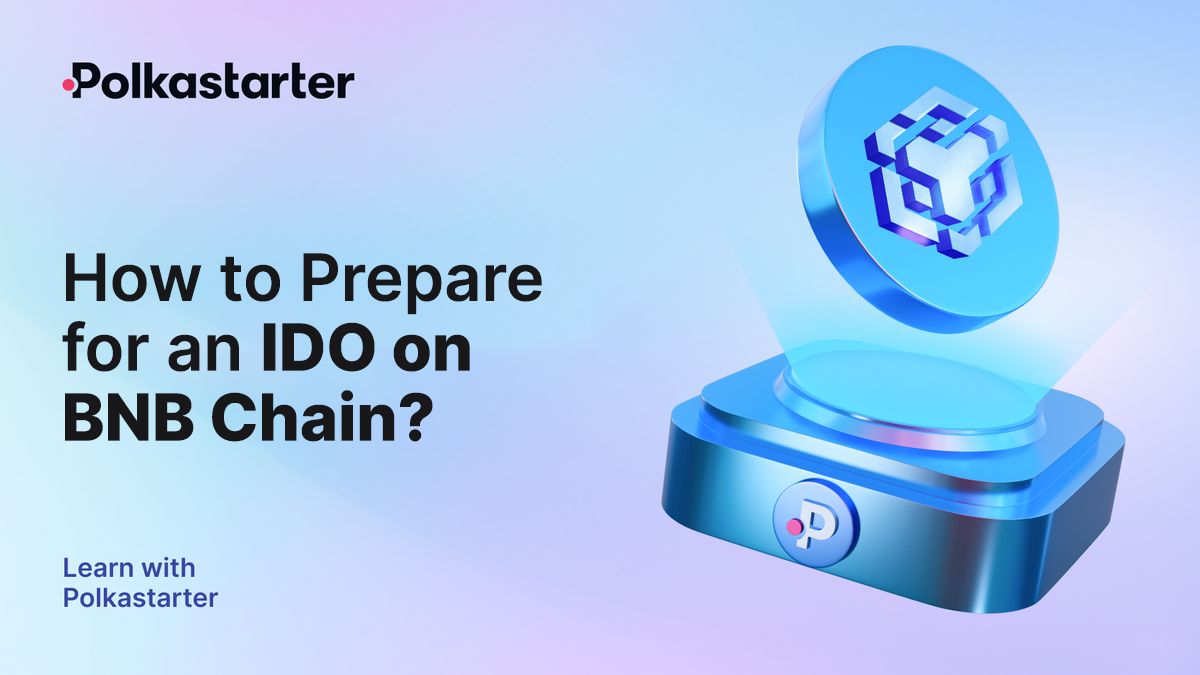
Stablecoins Explained: How They Work, The Luna Debacle & Their Future
To say that the cryptocurrency market has been in flux the past couple of weeks, would be an understatement.
The collapse of Terra (LUNA) and TerraUSD (UST) stablecoins caused over $40 billion in losses in crypto value with the crisis raising questions about stablecoins in general.
The word “volatile” has accompanied the crypto space since its birth, but the most recent turmoil is both unexpected and unprecedented.
Today, we’ll take a look into stablecoins, examine how they work, and try to decipher what the future holds for an asset that is currently under duress.
What are stablecoins?
Stablecoins are cryptocurrencies that are tied to a fiat currency, such as the US Dollar. Stablecoins were designed to be pegged to an expected and stable value in order to temper the volatility of the crypto market, mitigate the risk factor for investors as well as enable an easy and fast way to exchange money globally. To make this clearer, every stablecoin traded in the crypto market is backed by assets whose value should guarantee the stablecoin's value.
What are algorithmic stablecoins?
Algorithmic stablecoins are a new breed of stablecoins where, to put it simply, algorithms regulate their demand and supply. In contrast to traditional stablecoins, their value is not backed by any external asset. The algorithm is responsible for maintaining the relationship between the crypto and the fiat currency they track.
Types of algorithmic stablecoins
Now that we know the main differences between stablecoins and algorithmic stablecoins, let's see how the latter works. There are three types of algorithmic stablecoins — rebase, seigniorage, and fractional-algorithmic.
Rebase
Rebase stablecoins essentially manoeuvre the supply of a stablecoin to sustain its peg with fiat currencies. Coins are being minted (added) or burned (removed) based on the price movement of the stablecoin with the sole purpose of maintaining its valuation steady and secure. For example, if the price of the stablecoin goes above $1, coins are added to the circulation. On the contrary, if prices slip below the $10-mark, coins are removed.
Seigniorage
Seigniorage stablecoins are very similar. The main difference is that they are also paired with other cryptos to add another layer of valuation control. Apart from adding or removing coins from circulation, the protocol presents market participants with incentives to buy/sell the paired cryptocurrencies. That’s another way to keep the value of the coin stable.
Factional-algorithmic
Fractional algorithmic stablecoins follow a hybrid model, trying to combine the best of the rebase and seigniorage models. A model championed by Frax Finance.
Examples of algorithmic stablecoins
- Ampleforth (AMPL)
- USDD
- UXD
- UST
An overview of UST and LUNA
Terra (LUNA) is a layer1 blockchain and TerraUSD (UST) is a stablecoin. Both were launched in 2018 by Terraform Labs. The goal behind the project and main objective were to build an algorithmic stablecoin in which Terra (LUNA) would be burnt each time Terra (UST) loses its 1:1 peg to the dollar and vice versa. The algorithmic relationship between the two presented an opportunity for investors and traders.
When the UST supply was too small and demand for it too high, the price of UST would naturally rise above $1. As explained in our previous section, in order to bring UST back to its peg, the Terra protocol would let traders/investors trade 1 USD of LUNA for 1 UST. This trade burns 1 USD of LUNA and mints 1 UST, which users could sell for 1.01 USD and pocket a profit of 1 cent. Why would you bother for 1 cent, you might ask? Because if you do that repeatedly and in large volumes, you can actually make a substantial amount of money.
Anchor’s role in the Luna debacle
The reason investors were buying UST for the last couple of months was simple: to profit off a borrowing and lending platform called Anchor, which offered a 20% yield to anyone who bought UST and lent it to the protocol. The protocol’s white paper title is enough to give an idea of why Anchor played a significant role in Luna’s demise.
Anchor essentially created a demand for Terra due to the unreasonable yield returns. With the stablecoin not having real reserves to back it up, one swing was enough to break the algorithmic balance and lead the stablecoin to crash.
In what now seems like a prophetic article, setting up the stage for what was to follow, Decrypt’s article “We Need to Talk About Terra's Anchor”, shares the alarming stat that 72% of all UST was at the time, deposited in Anchor.
What caused the infamous de-pegging is still up in the air. Whether it was an attack or an unfortunate string of panic-driven moves, still remains to be seen but the important thing is that the crisis let the stablecoin move one step further.
With an announcement on May 11th, Terraform Labs explain that “In extreme situations like this, Terra cannot save both UST peg and save LUNA price at the same time.” The algorithm couldn’t keep up with the market which means that the algorithm needs to be calibrated to consider scenarios like the one just experienced.
What’s the difference between USDT, USDC, UST, and DAI?
What is USDT?
USDT is a stablecoin issued by Tether in 2014. As one of the first stablecoins on the crypto market, it enjoys high liquidity numbers, fandom, and market capitalization. Pegged to the US dollar, it helps investors grow the value of their dollar portfolio, protect themselves from volatility as well as use it as a normal cryptocurrency. What’s important to note is that the assets backing the stablecoin are a combination of different assets, not only dollars in the bank.
What is UST?
UST is another name for TerraUSD, a cryptocurrency stablecoin. As explained earlier, the main difference between UST to other stablecoins is that it is not backed by actual US dollars. The UST has an algorithmic relationship with its sister coin Luna, where in order to get a coin of one, the other has to be burned.
What is USDC?
USDC is a stablecoin collaboration between Circle and Coinbase. The stablecoins main benefits are price stability, high liquidity, and a good reputation as it’s backed by actual dollars in the bank.
The USDC follows the ERC20 standard which means it can be used with any app that accepts tokens based on that standard as well as buys any digital item in the crypto ecosystem.
On the other hand, fees for withdrawing USDC from exchanges can also be high and there is no real potential for price appreciation.
What is DAI?
DAI is a fully decentralized stablecoin. Even though it’s backed by different assets, the main one is USDC, like most of the coins on this list, what makes DAI different from its counterparts is that lives completely on the blockchain chain with its stability unobstructed by the legal system or middlemen. Essentially, DAI is governed and run by members of the MakerDAO.
What is the future of stablecoins?
If we were to take one thing away from the recent stablecoin saga is that regulation is no longer a buzzword, but an imminent reality. Treasury Secretary Janet Yellen, recently highlighted that the Terra collapse was a call for stablecoin legislation.
Legislation is not necessarily a bad thing. The goal is to create an environment where stablecoins can grow and evolve. It’s important to remember that crypto as a whole, let alone stablecoins, are technology paradigms in their infancy. These hiccups, as serious as they seem when they happen, are expected and can’t be avoided.
In the short-term, the UST collapse will increase the share of USDC, USDT and DAI and people eventually start reusing algorithmic stablecoin.
The only way to reimagine an entire ecosystem is trial and error. It’s understandable that many have lost faith in crypto over the past couple of weeks but it’s important to put everything in context and not lose the forest for the trees.
A few years from now, this will be a learning experience and hopefully a turning point in the journey and evolution of stablecoins and crypto in general. While we can’t guarantee any outcome, we can ensure you we’ll be here to record it, dissect it, analyse it, and involve you in the conversation.
About Polkastarter
Polkastarter is the leading decentralized fundraising platform enabling crypto’s most innovative projects to kick start their journey and grow their communities. Polkastarter allows its users to make research-based decisions to participate in high-potential IDOs, NFT sales, and Gaming projects.
Polkastarter aims to be a multi-chain platform and currently, users can participate in IDOs and NFT sales on Ethereum, BNB Chain, Polygon, Celo, and Avalanche, with many more to come.
Stay tuned for more upcoming IDOs
Website | Twitter | Discord | Telegram | Instagram | Newsletter | YouTube | Spotify
Polkastarter Blog - Latest Polkastarter News & Updates Newsletter
Join the newsletter to receive the latest updates in your inbox.





